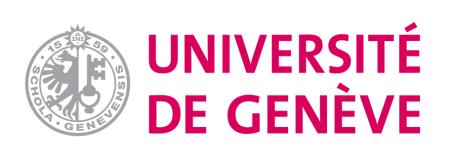
4 minute read
dans des unités COVID gériatriques

Projet 16 – B-Lab: Advanced Robotic Testing of Surgical Devices - Pilot project
Auteurs
Dr Nicolas Holzer, Division of Orthopedic Sugery and Muskuloskeletal Traumatology, Department of Surgery, Geneva University Hospitals; Dr Florent Moissenet, Kinesiology Laboratory, Faculty of Medicine, University of Geneva, Geneva University Hospitals
Partenaire
HEPIA HES-SO, Genève, Suisse
Résumé du projet
The present B-Lab project is a new research facility developed as a collaboration between 1) the Division of Orthopedic Surgery and Muskuloskeletal Traumatology of the Department of Surgery of the Geneva University Hospitals (Dr Holzer) 2) the Unit of Teaching in Anatomy of the Geneva Faculty of Medicine (Dr Beaulieu) and 3) the Kinesiology Laboratory of the University of Geneva (Dr Armand).
The scope of the research program is the creation of a unique platform for biomechanical evaluation of safety and efficacy of surgical devices using advances in the fields of a) robotised biomechanical testing, b) motion capture and c) imaging and three-dimensional image reconstruction.
The goal is the development of an in vitro models of human joints closely reproducing in vivo conditions and complexity of motion. The proof of concept study is focused on acromioclavicular traumatic injuries. The primary objective is the validation of a first model of the complete shoulder girdle by comparison with unique data acquired in vivo. Secondary objective is the assessment of safety and efficacy of a new surgical procedures for acromioclavicular stabilization of traumatic injuries.
Introduction
Evaluation of safety and efficacy of surgical devices relies on biomechanical testing in standardized conditions in vitro. Frequent limitations of biomechanical studies include the necessity to artificially isolate parts of complex articular systems and to analyze simple trajectories. Data acquisition furthermore often requires to constrain study specimens in non-physiologic ways. Those limitations introduce potentially important bias when extrapolating results to predict behavior of surgical devices in vivo. Advances of robotics allow to reproduce complex motion in vitro, overcoming limitations of previous equipment and emerges as a new gold standard. Association with advances in the fields of motion capture and image three dimensional reconstructions potentially opens new fields of investigation. Creation of a facilities giving access to those technologies represent a unique opportunity to attain a leading position in the field of surgical devices research and development.
Innovation
The innovation of the whole research program is to establish a unique platform for multimodal biomechanical evaluation of orthopaedic surgical devices using advances in


robotised testing associated with motion capture and three-dimensional image reconstruction.
The key methods related to pilot project addressing acromioclavicular injuries are: 1) Passive in vitro shoulder model: A robotic manipulator (KUKA iiwa, Kuka GmbH, Germany) moves the humerus of the specimen, while the thorax remains in a fixed vertical position on a mounting tower using a clamping system. Compared to the current literature, the present protocol allows to keep and analysis the full shoulder complex instead of mobilising only the clavicle and scapula. The set up uniquely allows for unconstrained study of individual elements of the shoulder complex avoiding biases of constrained models.
2) Testing protocol: The testing protocol consists in 15 cycles (for averaging purposes) of 4 analytic movements: shoulder flexion-extension, abduction-adduction, internal-external rotation and horizontal flexion-extension. These rotational movements are completed by two translational movements, i.e. vertical traction and horizontal compression. Each cycle is achieved at a rate of 5°/s using the robotic manipulator.
3) Surgery procedure: Based on this experimental setup, the contribution of the acromioclavicular (AC) ligaments and the coracoclavicular (CC) ligaments to the shoulder mobility is evaluated in native, rupture and reconstruction conditions. The testing protocol is applied for each of these conditions and shoulder kinematics computed for later comparison. All dissections and reconstructions are performed by the same experienced surgeon. The AC ligaments and CC ligaments are fully dissected to reproduce an acromioclavicular dislocation of Grade V following the Rockwood classification system of acromioclavicular joint injuries. Two groups of shoulders are then be constituted for the reconstructions. In the CC-first group, the coracoclavicular drilling is performed prior to the acromioclavicular reduction. In the AC-first group, the acromioclavicular reduction is performed prior to the coracoclavicular drilling. Ziptight device (Zimmer Gmbh, Switzerland) allowing for device insertion through single coracoclavicular tunnel is used for stabilisation. In each group, five stabilisation methods are tested: a) only coracoclavicular stabilisation, b) coracoclavicular stabilisation and horizontal circling of the acromioclavicular joint, c) coracoclavicular stabilisation and single vertical circling of the acromioclavicular joint, d) coracoclavicular stabilisation and double vertical circling of the acromioclavicular joint, e) coracoclavicular joint stabilisation and eight-shape circling of acromioclavicular joint.
4) Preparation of the specimens: Five specimens, i.e. 10 shoulders, are used in this pilot study. Only adult specimens younger than 80 years old with a whole intact upper part will be included in this study. Structures are examined for any degenerative changes or any signs of previous ligamentous injury. Any specimens with suspicion of degenerative joint disease or previous ligamentous injury are excluded from the study. All specimens are selected from the body donation program of the University of Geneva. All participants consented during their lifetime to the use of his or her body for teaching and research purposes. Specimens are first dissected to remove forearms and hands. Remaining soft tissues are attached at the extremity of the humerus. In order to record the true motion of the bony segments composing the shoulder complex, clusters of reflective markers are attached to intracortical pins (Hoffman 3, Stryker, États-Unis). These pins are drilled in each segment. Clusters of four markers are secured on each pin.
5) Trajectory planning of the robotic manipulator: Trajectories to be achieved by the robotic manipulator are first recorded by an experienced operator mobilising the specimen. For that, a set of reflective markers are placed on the tool linking the humerus


